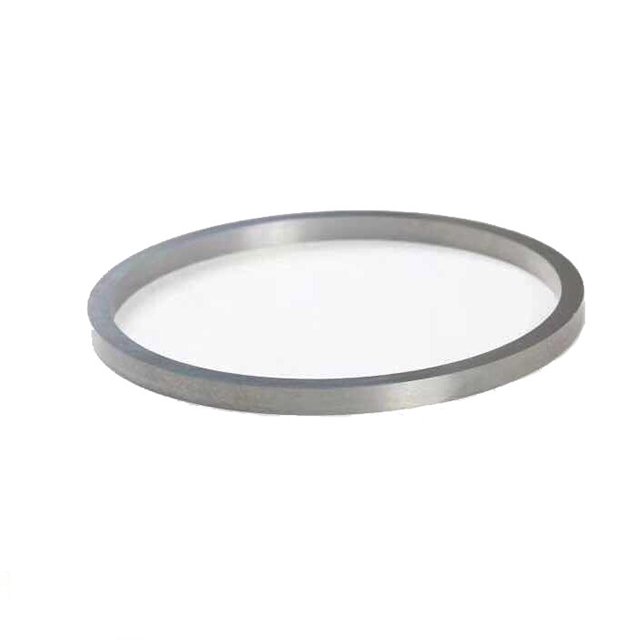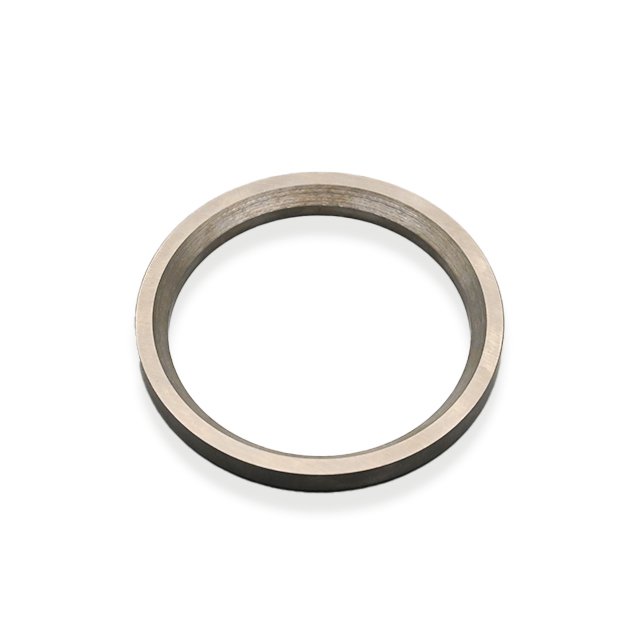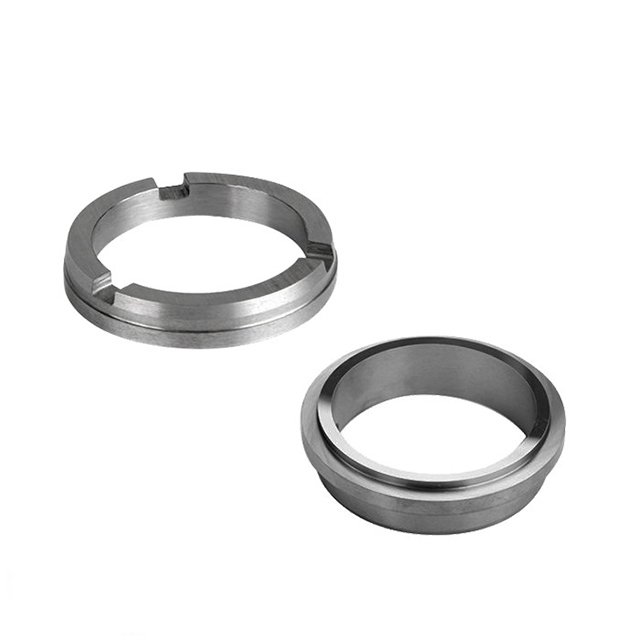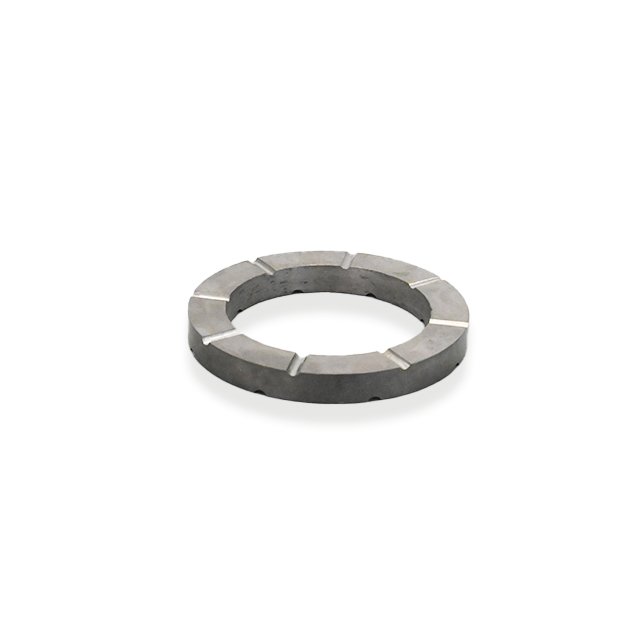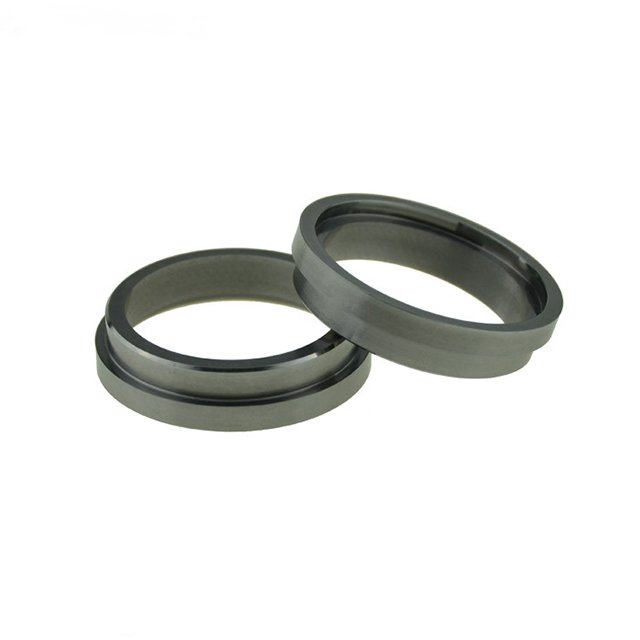Tungsten Carbide Rings
Forged with tungsten carbide’s extreme hardness, they ensure tight seals and wear resistance. Ideal for high – pressure, high – friction environments, our rings maintain precision under relentless stress.
Can’t find the Seal Ring you’re looking for?
Please share your equipment details, ring specification requirements (e.g., size, shape), and application environment. Our team will respond within 72 hours to discuss customized sample solutions, including material properties, design,and quotation.
What is a tungsten carbide ring?
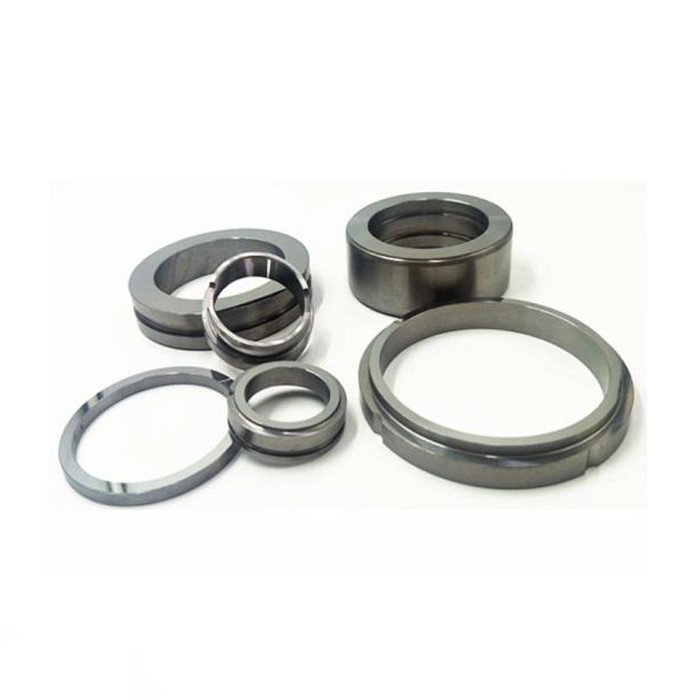
Common Seal Rings Hole Structures
The structural design of tungsten carbide rings dictates core performance metrics like sealing efficiency, load – bearing capacity, and wear resistance, directly influencing their in industrial applications.

Straight - Wall Type
- Structural Feature:Features a uniform cylindrical cross – section with parallel inner and outer walls. The simple, consistent structure ensures stable dimensional tolerance.
- Functional Advantage:Delivers reliable static sealing under low – to – medium pressure. Minimizes friction during axial/radial movement, suitable forial movement, suitable for precision guiding components.
- Typical Applications:General – purpose seals in standard pumps, valves, and hydraulic cylinders; guiding rings in precision machining tools (e.g., CNC lathe spindles).
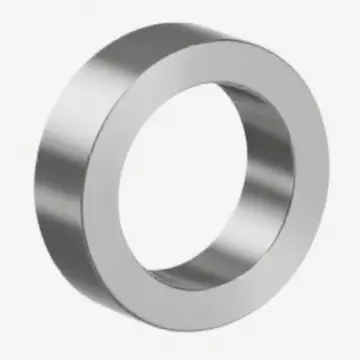
Tapered Type (Conical)
- Structural Feature:Inner/outer diameters show gradual tapering (e.g., 3°–15° angle). The conical profile creates a self – centering effect under axial load.
- Functional Advantage:Concentrates pressure to enhance sealing integrity in high – pressure systems. Improves load distribution, reducing localized wear.
- Typical Applications:High – pressure oil/gas wellhead equipment; sealing rings in mining machinery (e.g., rock breaker hydraulic systems); cone crushers’ wear parts.

Grooved Type (Spiral/Annular)
- Structural Feature:Integrates spiral/annular grooves on inner/outer surfaces. Grooves may be single or multi – channel, with depths of 0.2–1.5 mm.
- Functional Advantage:Grooves act as lubricant reservoirs, reducing friction and heat. Spiral grooves can also guide fluid flow to flush contaminants.
- Typical Applications:Sealing rings in high – speed rotating equipment (e.g., turbo – pump seals); wear – resistant rings in marine propeller shafts (with seawater lubrication).
What Products Are Commonly Used For?

Pumps
- Application: Centrifugal pumps, reciprocating pumps in oil/gas, chemical, and refining industries.
- Role: Seals aggressive fluids (corrosive, particle – laden media) under high pressure/temperature. Prevents leakage, extends pump lifespan in harsh conditions.
- Why Choose It: Withstands abrasion from solid particles; resists corrosion by acids/alkalies. Maintains sealing integrity 3–5x longer than metal/ceramic rings.

Compressors
- Application: Reciprocating/centrifugal compressors in petrochemical, natural gas sectors.
- Role: Seals high – pressure gas streams (e.g., methane, hydrogen). Endures cyclic pressure changes and extreme temperatures.
- Why Choose It: High hardness (≥90 HRA) resists deformation; low friction ensures stable operation. Cuts maintenance downtime by 40% in high – cycle systems.
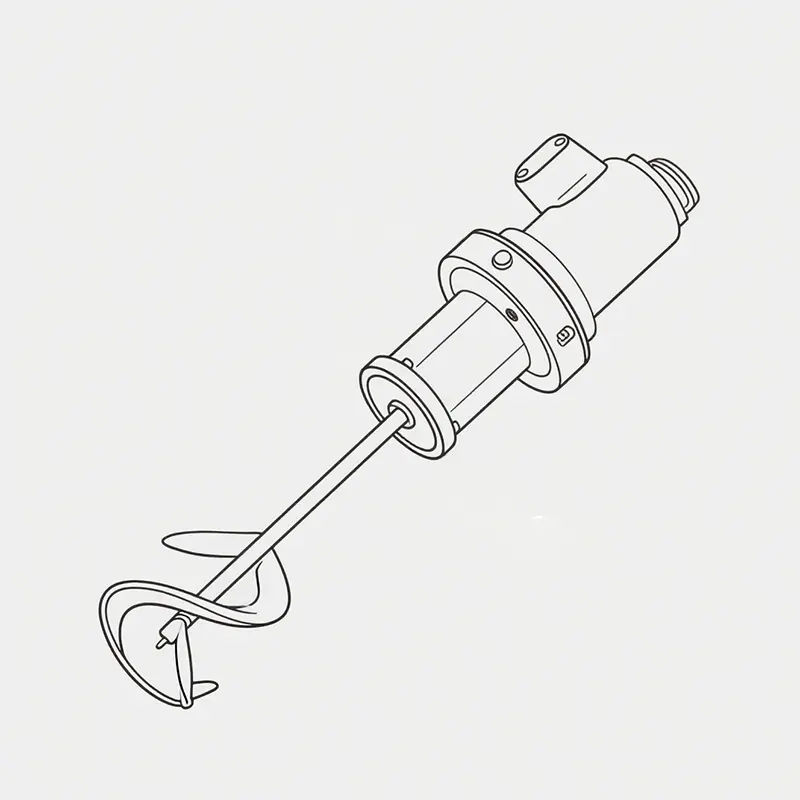
Agitators
- Application: Reactor agitators in chemical, pharmaceutical plants (corrosive, high – temp environments).
- Role: Seals rotating shafts against reactive fluids (e.g., solvents, catalysts). Prevents hazardous leaks into reactors.
- Why Choose It: Maintains precision tolerances (≤0.002mm) under continuous rotation. Outperforms stainless steel in acidic media by 80%+ lifespan.

Valves
- Application: Gate valves, globe valves in oil/gas pipelines, chemical processing (high – pressure, abrasive media).
- Role: Seals valve seats/discs to block fluid flow. Critical for zero – leakage in emergency shutdown systems.
- Why Choose It: Resists galling (metal adhesion) during frequent cycling; handles abrasive slurries (e.g., mining sludge) without failure.

Rotary Joints
- Application: Cooling systems (CNC machines), hydraulic circuits (injection molding), paper mills (steam transfer).
- Role: Seals rotating interfaces in multi – directional fluid transfer. Adapts to high – speed rotation (≤3000 RPM) and mixed media.
- Why Choose It: Self – lubricating under dry – run conditions; maintains seal in misaligned shafts. Reduces leakage rates by 90% vs. rubber seals.
Application Scenarios of Rings
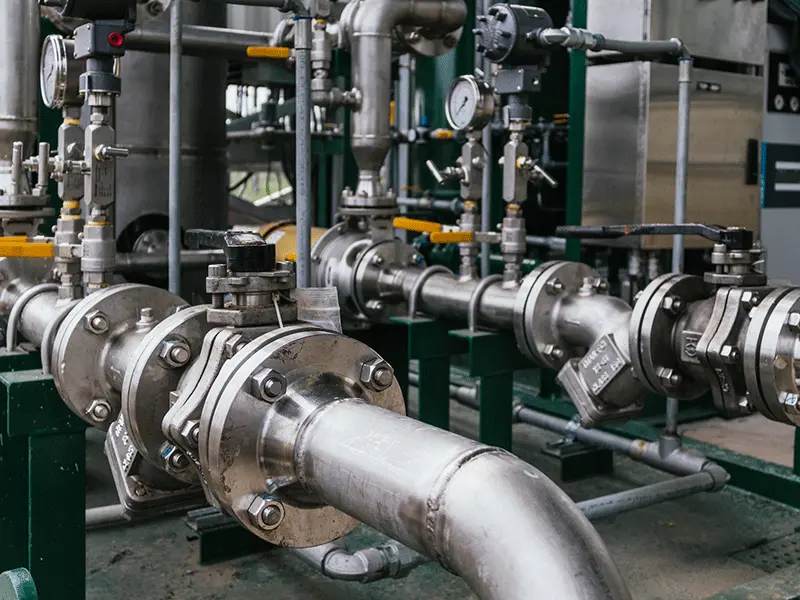
Fluid Conveyance

Reaction Agitation

Fluid Control

Rotary Sealing
What You Need to Know About Common Ring Parameters
The common parameters of tungsten carbide rings mainly revolve around aspects like material composition, physical properties, and dimensional accuracy. Different application scenarios emphasize distinct parameters. Here’s a breakdown of the core parameters
Material-Related Parameters
| WC Content Range | Core Performance | Typical Scenarios | Key Property Trade-off |
|---|---|---|---|
| ≥95% (Ultra-High Grade) | Extreme abrasion resistance, high hardness | Sand-laden mud drilling, granite penetration, abrasive slurry systems | Max wear resistance ↔ Lowest toughness (prone to chipping under heavy impact) |
| 85%–90% (Medium Grade) | Balanced hardness & toughness | Conventional drilling (sandstone reservoirs), general industrial sealing | Versatile for mainstream applications |
| 80%–85% (Medium-Low Grade) | Enhanced toughness, moderate wear resistance | Soft formation drilling (shale, clay), vibration-prone rotary joints | Toughness priority over extreme abrasion resistance |
❗ Ultra-high WC excels in abrasive environments but risks fracture in gravel layers; medium-low WC resists chipping in offshore/vibratory systems.
| Binder Type | Core Property | Applicable Scenarios | Formulation & Cost Notes |
|---|---|---|---|
| Cobalt-based (Co, 3%–6%) | High hardness + wear resistance | Precision sealing (pumps, valves), fine grinding tools | Low Co → Brittle risk; requires smooth operation conditions |
| Cobalt-based (Co, 10%–20%) | High toughness + impact resistance | Mining machinery, heavy-load drill bits | High Co → Lower hardness; 30%+ cost increase vs. low-Co grades |
| Nickel-based (WC-Ni) | Acid/alkali corrosion resistance | Sour gas wells (H₂S), chemical processing | Ni enhances oxidation resistance; 50%+ cost vs. Co-based |
| Iron-based (WC-Fe) | Economical corrosion resistance | Low-corrosive industrial pumps, general valves | Weaker than Ni in strong acids; 40% cost reduction vs. Ni |
❗ Cobalt-based accounts for 80% of applications (cost-effective/versatile); Ni/Fe grades need strict sintering atmosphere (oxygen-free) to avoid oxidation defects.
physical property parameters
| Specific Parameter | Measurement/Range | Key Features | Application Notes |
|---|---|---|---|
| Rockwell Hardness (HRA) | 89–93 | Near-diamond hardness | General industrial sealing systems |
| Vickers Hardness (HV) | 1200–2400 | High indentation resistance | Precision grinding tools (e.g., bearing rings) |
| High-Temp Hardness Retention | ≥80% of room-temperature hardness at 700℃ | Maintains hardness under thermal load | Aerospace engine seals, high-temp valves |
❗ For high-temperature applications, prioritize “High-Temp Hardness Retention” data over room-temperature values.
| Specific Parameter | Measurement/Range | Key Features | Application Notes |
|---|---|---|---|
| Bending Strength | 1500–3000 MPa (e.g., YG8: ~1800 MPa) | Reflects fracture resistance | High-impact scenarios (e.g., crusher wear parts) |
| Tensile Strength | 980–1500 MPa | Marked for extreme tensile loads | Heavy-load valves, tension-bearing rotary joints |
❗ Tensile strength is rarely standalone; combine with bending strength for impact-resistant design.
| Parameter Category | Specific Parameter | Measurement/Range | Key Features | Application Notes |
|---|---|---|---|---|
| Density | Density Range | 14.5–15.5 g/cm³ (Theoretical WC: 15.63 g/cm³) | Closer to theoretical value = more stable performance | Precision seals (strict uniformity requirements) |
❗ Density uniformity directly affects sealing precision; use ultrasonic testing for verification.
| Specific Parameter | Measurement/Range | Key Features | Application Notes |
|---|---|---|---|
| Melting Point | Pure WC: ~2870℃ Alloy: Lower (due to binder addition) | Binder phase reduces melting temperature | Mark as “Max Operating Temp”: Conventional: ≤500℃; Modified: ≤800℃ |
| Thermal Conductivity | 80–160 W/(m·K) | Affects heat dissipation efficiency | High-temp equipment (e.g., hot rolling mill seals) |
❗ For thermal shock scenarios, combine thermal conductivity with “high-temp hardness retention” data.
Dimensions and Precision
| Parameter | Core Feature | Use Case |
|---|---|---|
| Inner Diameter (ID) | Marked as “ID = X mm” (e.g., ID = 20 mm) | Adapts to shaft/hole sealing structures in pumps/valves |
| Outer Diameter (OD) | Marked as “OD = X mm” (e.g., OD = 30 mm) | Matches housing dimensions of compressors/agitators |
| Thickness (T) | Marked as “T = X mm” (e.g., T = 5 mm) | Provides structural support for rotary joint seals |
❗ Custom dimensions required for non-standard equipment (e.g., high-pressure valves).
| Parameter | Core Feature | Use Case |
|---|---|---|
| Roundness & Cylindricity | Precision seals: Roundness ≤0.002 mm, Cylindricity ≤0.005 mm | Ensures leak-proof performance in shaft/hole mating |
| Surface Roughness | Sealing face: Ra ≤0.2 μm; Ultra-precision (aerospace): Ra ≤0.05 μm | Critical for hydraulic system seals in aerospace/defense |
❗ Achieving tight tolerances requires precision grinding (e.g., CNC lapping).
| Parameter | Core Feature | Use Case |
|---|---|---|
| Grooved/Threaded Rings | Groove depth (e.g., 0.5 mm), width (e.g., 1 mm), thread pitch | Enhances lubrication in high-speed rotating joints |
| Composite Structure Rings | Cone angle (e.g., 5°–10° for double-taper designs) | Optimizes load distribution in high-pressure valves |
❗ Special structures require 3D simulation to verify fluid dynamics/mechanical compatibility.

